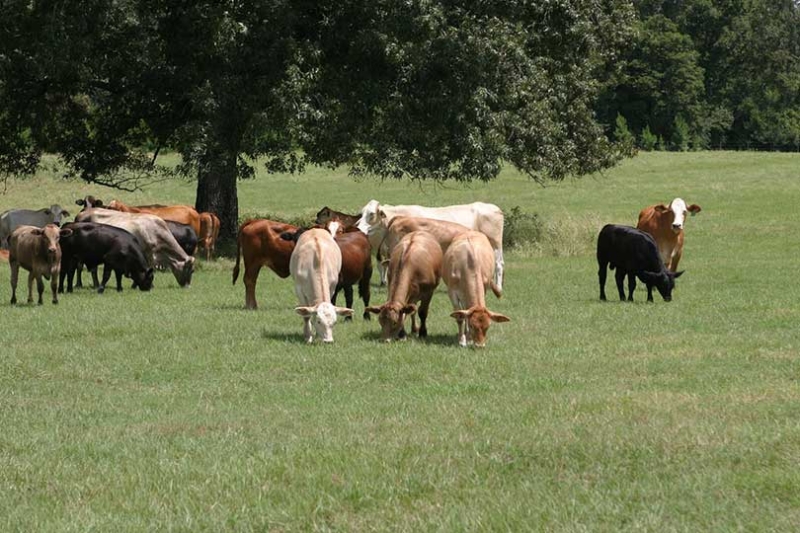By Julie Tomascik
Editor
President Donald Trump on Sunday signed a year-end spending bill that included $900 billion in COVID-19 relief, some of which is earmarked for agriculture.
In the coronavirus stimulus bill, $13 billion, which is about 1.4 percent of the total spending, is allocated for direct assistance to farmers and ranchers.
In the $13 billion for agriculture, funding will go to:
- $11.2 billion to the Office of the Agriculture secretary
- $870 million to supplemental Dairy Margin Coverage program, as well as a dairy donation program
- $300 million to the Commerce Department to assist fisheries
- 200 million over 10 years ($20 million per year) to address gaps in nutrition research
- $100 million for specialty crop block grant programs
- $100 million for local agriculture market programs
- $75 million for farming opportunities training and outreach
- $75 million for Gus Schumacher nutrition program
- $60 million for interstate shipment grants
- $28 million for farm stress programs
The $11.2 billion of direct financial assistance to farmers will be made through a new round of Coronavirus Food Assistance Program (CFAP) payments.
Farmers of 2020 price trigger crops and flat-rate crops are eligible to receive a payment of $20 per eligible acre of the crop.
Under CFAP 2, price trigger commodities are those that meet a minimum 5 percent price decline over a specified period. These crops include: barley, corn, sorghum, soybeans, sunflowers, upland cotton and all classes of wheat.
Flat-rate crops under CFAP 2 do not have data available to calculate a price change or do not meet the 5 percent price decline trigger. They include: alfalfa, amaranth grain, buckwheat, canola, extra long staple (ELS) cotton, crambe (colewort), einkorn, emmer, flax, guar, hemp, indigo, industrial rice, kenaf, khorasan, millet, mustard, oats, peanuts, quinoa, rapeseed, rice, sweet rice, wild rice, rye, safflower, sesame, speltz, sugar beets, sugarcane, teff, and triticale.
The flat-rate crops will also receive a payment of $20 per acre.
For specialty crops, the legislation modified the sales-based rules from CFAP 2 to allow specialty crop farmers to include crop insurance indemnities and disaster payments in their 2019 sales, which was the basis for determining the amount of support under CFAP 2, or by substituting 2018 sales. Specialty Crop Block Grants and aid through the Local Agriculture Market Program are also available.
The bill also includes funds to address supply chain issues and to provide assistance for livestock and poultry contract growers.
Inventory-based direct payments for cattle producers will be based on the difference between the CARES Act inventory payment rate, the Commodity Credit Corporation payment rate and the CFAP 2 payment rate multiplied by a percentage factor.
Supplemental coverage for the Dairy Margin Coverage program and two dairy donation-style programs are part of the bill.
The first dairy donation program will pay milk processors the full value of milk used to produce and donate dairy products into food assistance channels. The other program would provide $1.5 billion for the U.S. secretary of agriculture to purchase and distribute food and agricultural products through nonprofit organizations.
Other livestock provisions include a livestock dealer statutory trust and a one-year authorization to livestock mandatory reporting, extending the law that requires buyers and sellers of meat and livestock to report the price and volume of certain commodities.
Additional highlights of the COVID stimulus bill include allocating $300 million for rural broadband and allowing expenses paid with Paycheck Protection Program loans to be tax deductible.
“Texas Farm Bureau (TFB) is pleased Congress has acted to provide roughly $13 billion in additional direct assistance to farmers and ranchers who continue to struggle with uncertainty caused by COVID-19,” TFB President Russell Boening said last week after Congress passed the bill.
In addition to the coronavirus aid, the 5,593-page bill includes funding for the federal government for fiscal year 2021. The omnibus includes funding to combat cattle fever ticks and feral swine. The new benefits for rural health providers and extensions of tax incentives for biofuels and renewable biofuels, among other items, are also included.
Congress passed the bill on Dec. 21, but it was unclear if Trump would sign the legislation after a series of tweets last week.
“I will sign the omnibus and COVID package with a strong message that makes clear to Congress that wasteful items need to be removed,” Trump said. “I will send back to Congress a redlined version, item by item, accompanied by the formal rescission request to Congress insisting that those funds be removed from the bill.”
Trump’s signature on the legislation also prevented a government shutdown this week.

